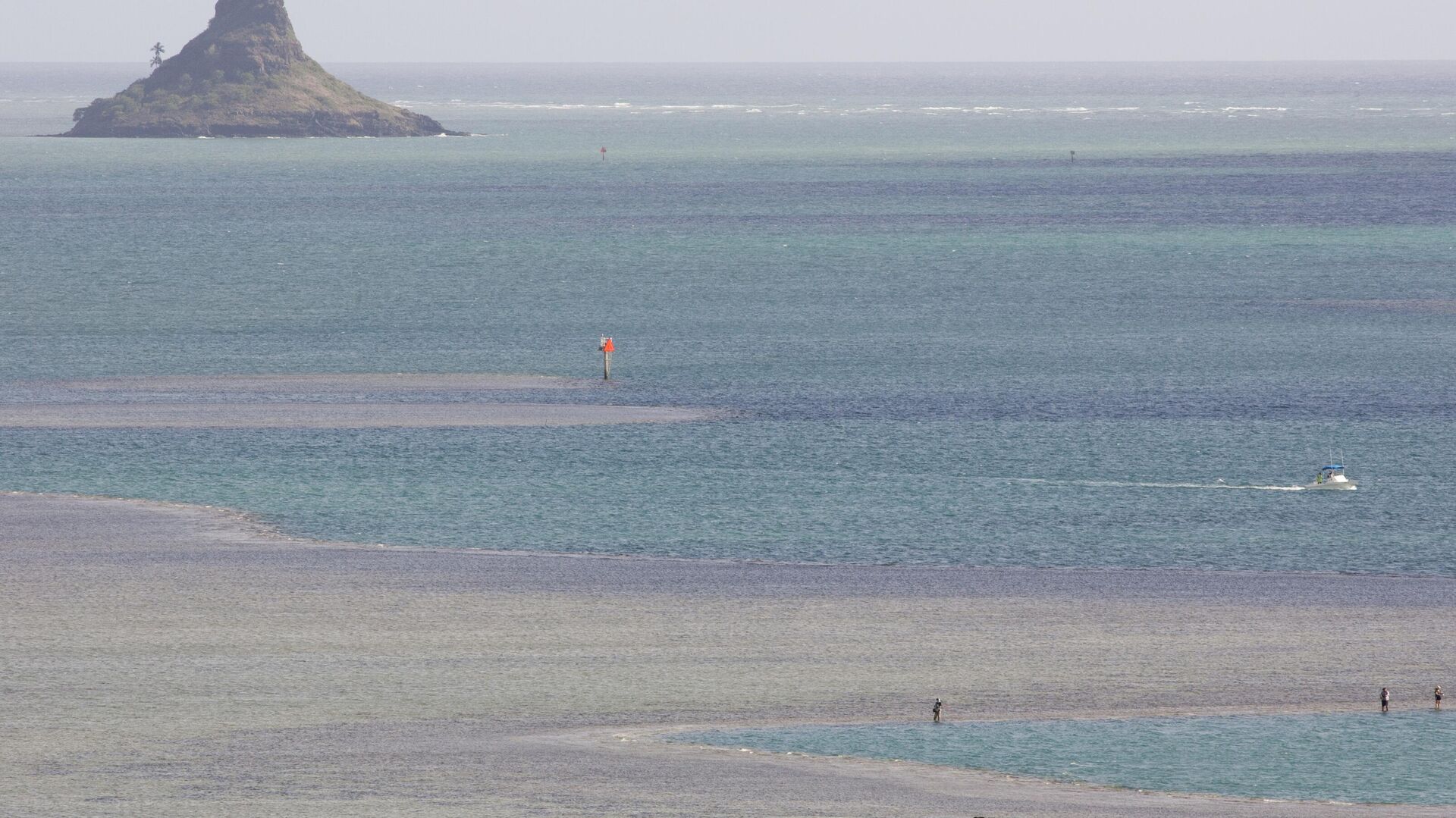https://sputnikglobe.com/20230725/oceans-increasing-turning-green-over-last-20-years-scientists-say-1112125531.html
Oceans Increasingly Turning Green Over Last 20 Years, Scientists Say
Oceans Increasingly Turning Green Over Last 20 Years, Scientists Say
Sputnik International
The study, conducted by scientists analyzing data from NASA's Modis-Aqua satellite, found that the deep blue sea is gradually becoming greener over time.
2023-07-25T03:50+0000
2023-07-25T03:50+0000
2023-07-25T04:14+0000
beyond politics
science & tech
earth
nasa
ecology
oceans
plankton
https://cdn1.img.sputnikglobe.com/img/07e6/0b/13/1104425481_0:121:3211:1927_1920x0_80_0_0_5fb88b87003accf920e94c2d996cb48d.jpg
New research has revealed Earth's oceans are undergoing a noticeable change in color due to climate breakdown. The study, led by BB Cael from the National Oceanography Centre in Southampton, focused on changes in the ocean's hue across a broader color spectrum, including red and blue. Previous research primarily focused on changes in the greenness of the ocean, linked to the presence of chlorophyll in plankton, which provides insights into climate change trends.By examining changes in color, scientists can gain a clearer understanding of shifts in plankton populations worldwide. Phytoplankton, which forms the base of many ocean food chains, is crucial to the health of ocean ecosystems.Comparing the observed changes in color with a computer model simulating what the oceans would look like without human-caused global heating, the researchers found a clear discrepancy. The changes in color were detected over 56% of the world's oceans, which is a greater area than all the land on Earth.While most areas exhibited a distinct "greening effect," indicating an increase in phytoplankton, some regions showed increases or decreases in red or blue colorations. These color changes provide valuable evidence that human activities are likely impacting large parts of the global biosphere in ways that are not yet fully understood.Although the study documents the consequences of a changing climate, the strength and underlying causes of these changes in color remain uncertain. Factors such as the increase in microplastics in the ocean, which can scatter light, may be contributing to the observed trends. Further research is needed to fully comprehend the ecological and biogeochemical implications of these color changes.NASA will launch a new satellite mission called Pace (plankton, aerosol, cloud, ocean ecosystem) in January 2024. This mission will measure hundreds of colors in the ocean, providing more comprehensive data for studying these changes and their ecological impact.The findings of the study were published in the journal Nature.
https://sputnikglobe.com/20230710/crunch-deep-sea-mining-talks-resume-amid-growing-global-hunger-for-rare-minerals-1111790993.html
earth
Sputnik International
feedback@sputniknews.com
+74956456601
MIA „Rossiya Segodnya“
2023
News
en_EN
Sputnik International
feedback@sputniknews.com
+74956456601
MIA „Rossiya Segodnya“
Sputnik International
feedback@sputniknews.com
+74956456601
MIA „Rossiya Segodnya“
nasa modis-aqua satellite program, what color is the world ocean, do oceans change color, how human activity affects nature, what makes plankton important, green oceans,
nasa modis-aqua satellite program, what color is the world ocean, do oceans change color, how human activity affects nature, what makes plankton important, green oceans,
Oceans Increasingly Turning Green Over Last 20 Years, Scientists Say
03:50 GMT 25.07.2023 (Updated: 04:14 GMT 25.07.2023) The study, conducted by scientists analyzing data from NASA's Modis-Aqua satellite, found that the deep blue sea is gradually becoming greener over time, with the most significant changes occurring in low latitude regions near the equator.
New research has revealed Earth's oceans are undergoing a noticeable change in color due to climate breakdown.
The study, led by BB Cael from the National Oceanography Centre in Southampton, focused on changes in the ocean's hue across a broader color spectrum, including red and blue. Previous research primarily focused on changes in the greenness of the ocean, linked to the presence of chlorophyll in plankton, which provides insights into climate change trends.
"The reason we care about this is not because we care about the colour, but because the colour is a reflection of the changes in the state of the ecosystem," said Cael.
By examining changes in color, scientists can gain a clearer understanding of shifts in plankton populations worldwide. Phytoplankton, which forms the base of many ocean food chains, is crucial to the health of ocean ecosystems.
Comparing the observed changes in color with a computer model simulating what the oceans would look like without human-caused global heating, the researchers found a clear discrepancy. The changes in color were detected over 56% of the world's oceans, which is a greater area than all the land on Earth.
While most areas exhibited a distinct "greening effect," indicating an increase in phytoplankton, some regions showed increases or decreases in red or blue colorations. These color changes provide valuable evidence that human activities are likely impacting large parts of the global biosphere in ways that are not yet fully understood.
Although the study documents the consequences of a changing climate, the strength and underlying causes of these changes in color remain uncertain. Factors such as the increase in microplastics in the ocean, which can scatter light, may be contributing to the observed trends. Further research is needed to fully comprehend the ecological and biogeochemical implications of these color changes.
"These are not ultra, massive ecosystem-destroying changes, they may be subtle," said Cael. "But this gives us an additional piece of evidence that human activity is likely affecting large parts of the global biosphere in a way that we haven’t been able to understand."
NASA will launch a new satellite mission called Pace (plankton, aerosol, cloud, ocean ecosystem) in January 2024. This mission will measure hundreds of colors in the ocean, providing more comprehensive data for studying these changes and their ecological impact.
The findings of the study were published in the journal
Nature.



